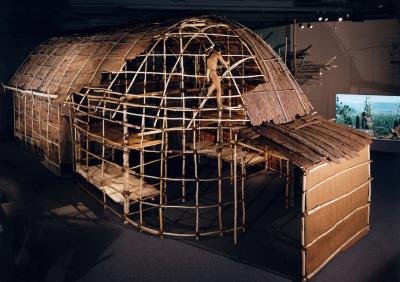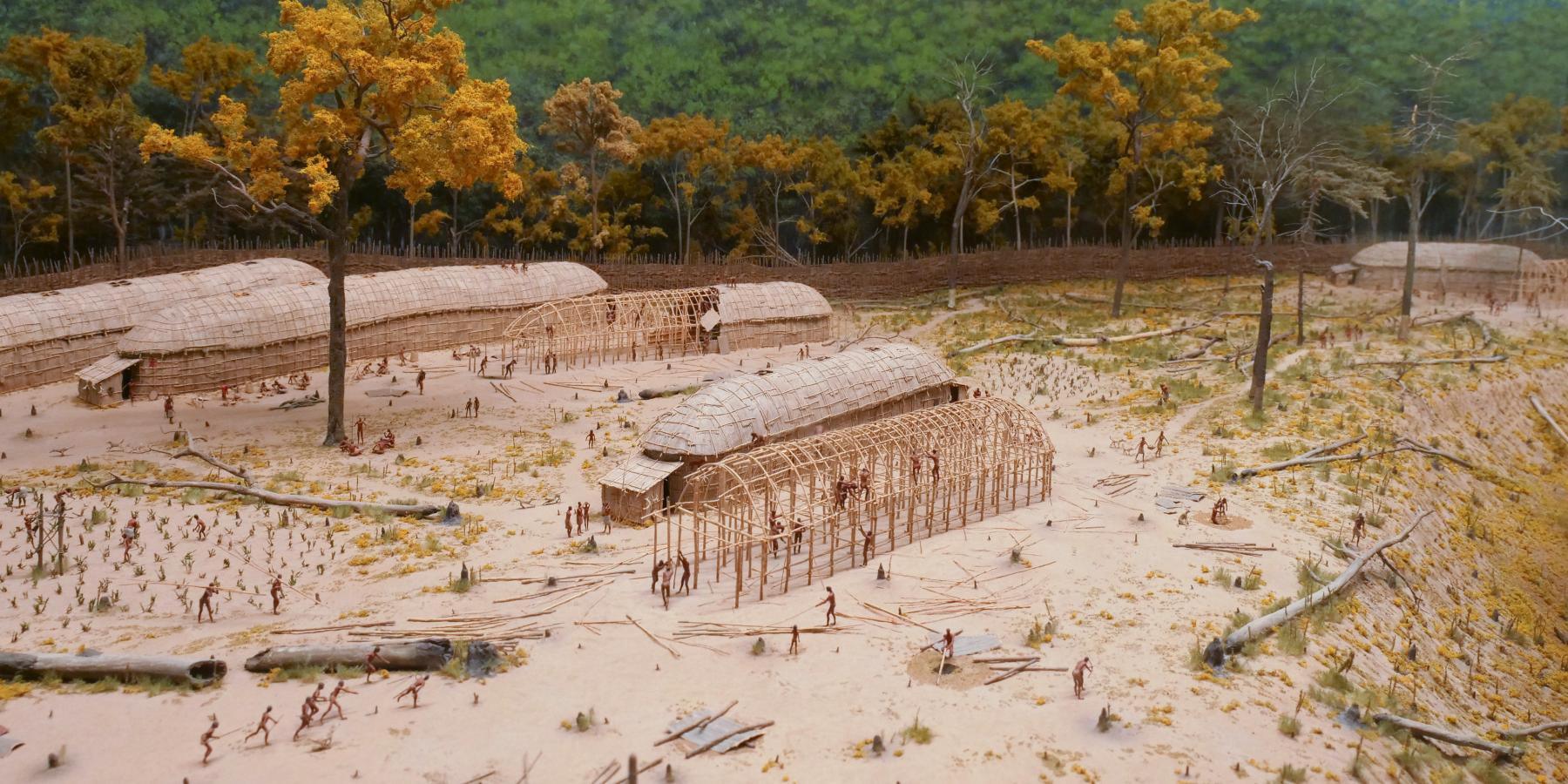Replica Kanien’keha:ka (Mohawk) Haudenosaunee (Iroquois) Longhouse

The design of the kanonhsésne (longhouse) reflected the social organization of Haudenosaunee (Iroquois) culture, 300 - 500 years ago. Its architecture and construction are adapted to the raw materials available to the Haudenosaunee in their immediate surroundings, and to the tools and technology in their possession.
Longhouses are exactly that: long houses that have a long, narrow, rectangular shape. They have been built by many different cultures around the world. Long ago, Vikings lived in longhouses; today, some rice-farming people in Borneo live in them. All longhouses have the same general shape but were built with different kinds of materials and by different methods. Longhouses were the traditional homes for many of the farming tribes of American Indians that lived in southern New England, New York, Pennsylvania, and New Jersey. The Haudenosaunee people of upstate New York were among them.
The name Haudenosaunee means "People of the Longhouse." To the Haudenosaunee people, the longhouse meant much more than the building where they lived. The Longhouse was also a symbol for many of the traditions of their society. Five nations formed the original Haudenosaunee (Iroquois) Confederacy. These nations shared a territory they thought of as a large longhouse. The Senecas, who lived in the western end of this territory, were the "Keepers of the Western Door" of the Longhouse. The Mohawks, who lived in the eastern end of the territory, were the "Keepers of the Eastern Door." The Onondagas held the important role of "Keepers of the Central Council Fire and Wampum." To the modern Haudenosaunee people, including the Seneca, Mohawk, and Onondaga who continue to live on their ancestral territories, the Longhouse remains a powerful symbol of the ancient union and is important to many traditions.


